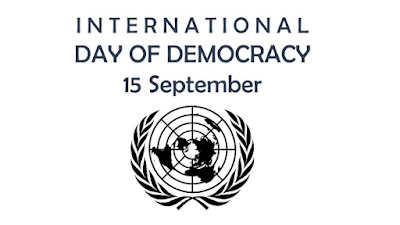
Every 15 September, the world observes the International Day of Democracy, highlighting the importance of democracy for peace, human rights, and sustainable development.
This day reminds us that democracy is about people’s active participation, the rule of law, and protecting freedoms and institutions that uphold justice and equality for all.
🌟 Why This Day Matters
✅ Protects Freedoms: Promotes freedom of expression, assembly, and a free press.
✅ Empowers People: Encourages participation in civic life and decision-making.
✅ Strengthens Institutions: Supports rule of law, accountability, and transparency.
✅ Promotes Peace: Democracies are more likely to resolve conflicts peacefully.
📜 Background
✨ Established by the UN General Assembly in 2007 to promote democratic principles worldwide.
✨ Each year focuses on a specific theme, such as youth engagement, technology and democracy, or strengthening democratic institutions.
✨ The day aligns with the UN’s commitment to the Universal Declaration of Human Rights.
📊 Key Facts
✨ Democracy is about more than elections — it’s about active citizen participation and human rights.
✨ Global challenges like misinformation, polarization, and threats to press freedom test democracies.
✨ Civic education and community engagement strengthen democratic culture.
🎉 How to Observe
✅ Engage: Learn about your civic rights and responsibilities.
✅ Speak Up: Use #InternationalDayOfDemocracy to advocate for freedoms and inclusion.
✅ Support Press Freedom: Share reliable information and stand against misinformation.
✅ Create Art: Illustrate themes of freedom, equality, and participation.
💡 Why It Matters
✅ Encourages people to value and protect democratic freedoms.
✅ Highlights the role of civil society and media.
✅ Reminds us that democracy must be nurtured and defended by every generation.
“Democracy is not just a goal — it’s a process that must be continually nurtured and strengthened.” – UN
🎨 Artistic & Educational Opportunities
For artists, educators, and storytellers:
🎨 Create powerful art that reflects people’s voices and freedoms.
📸 Share reels explaining democratic values and civic engagement.
🖋️ Write about freedom fighters and champions of democracy.
👩🏫 Host discussions on democratic values and youth participation.
📌 Final Thought
On 15 September, International Day of Democracy, let us reflect on our rights, responsibilities, and the shared duty to uphold freedom, equality, and justice for all.
🏠 For more art, travel, and cultural stories, visit our CRA ARTS Main Page.
Comments
Post a Comment